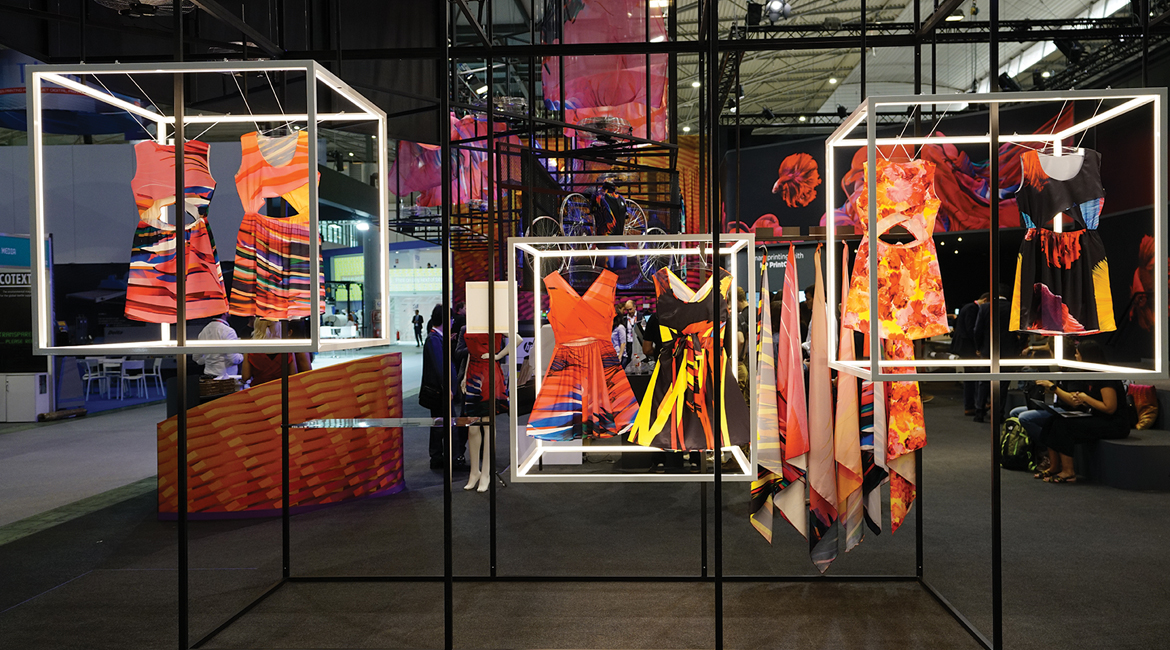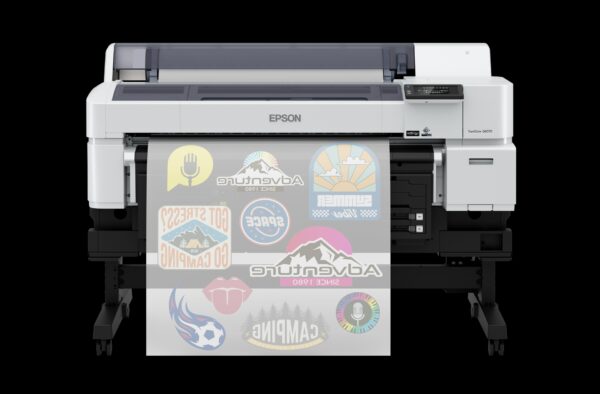I’m always looking for new opportunities to talk about textile printers. Recently, I was invited to participate in a panel at the 2023 TD Synnex Executive Print and Imaging Summit in Greenville, South Carolina, June 7-9. The attendees are active in our industry, and our host assembled a panel of three industry thought leaders, including myself, plus a moderator. The main questions were about the sustainability of the copier/print world.
I prepared for an audience of principals or owners whose focus was large format and small format devices, managed print services, and supplies. Some dealers are veterans, and some are newer. The size of their business varied from smaller dealerships to large ones, such as Marco.
ITMA, Textile Printers, and the Future of Print
Due to the audience’s focus, I reviewed the events of the past four years that helped form our opinions of what the print world will look like in the not-too-distant future.
I referenced the previous exhibitions and events I had attended, singling out the 18th ITMA (International Textile Machinery Association) conference in Barcelona that Carol, CJ, and I attended in May 2019. It is the world’s largest textile and garment technology exhibition. It is owned by CEMATEX, the European Committee of Textile Machinery Manufacturers and occurs every four years. Coincidentally, the 2023 ITMA conference took place in Milan, Italy, from June 8-14.
In addition to the hardware on display, including textile printers, everything that is needed to produce finished products is exhibited. Attendees can see it all and talk to the vendors involved in finishing these digitally printed products.
What is the relevance of this event to our current copier/print world, and why would I focus on this event at the 2023 TD Synnex Executive Print and Imaging Summit? As of 2021, the global textile industry had a market size of $993.6 billion.
The manufacturers who exhibit at this conference produce industrial inkjet textile printers using water-based inks to print on fabric. The operative word is print. During the panel discussion, I wanted to highlight the importance of textile printers and printing in the future.
Textile Printer Manufacturers at ITMA 2019
At the 2019 ITMA conference, we visited EFI Reggiani, Konica Minolta, HP, and Epson. For us, ITMA is a marvelous opportunity to meet with executives who have international responsibility for the various segments of their respective company’s business.
At ITMA 2019, we interviewed Frank Mallozzi, chief revenue officer of EFI at the time. We asked why printing on textiles is such an important market for EFI? “We believe we are leaders in transitioning print products from analog to digital,” Mallozzi responded. “These were the same steps we took for Vuetek, Jetrion, and Creta Print, and we are now repeating that with Reggiani.”
We also asked what percentage of revenue textile printing represents for EFI. “It is responsible for 25% of the industrial portfolio,” said Mallozzi. Brands such as Under Armor, Gucci, and Dolce Gabbana are just some of the potential customers for textile printing.
We also learned you can print on all kinds of materials and synthetics. The inks used drive various applications. For instance, silk requires acid-based inks. EFI uses reactive inks for synthetic fabrics. There is dispersed ink and dye sublimation which is used for soft signage.
The most important thing we learned at ITMA was that manufacturers such as EFI believe that dealers already selling to commercial printers can sell and support digital textile printers. Unlike many print-oriented businesses, production and industrial print is enjoying a boom in label printing and packaging, and now have the added opportunity of textile printing.
Unfortunately, the pandemic that took hold in 2020 impeded the introduction of manufacturers such as Konica Minolta from introducing its textile printers into North America. We fully expect it will happen this year.
During our ITMA visit with Epson, we spoke with Fernando Stinchi, vice president marketing. He validated why Epson is a serious player in textile printing. That plus the fact that $7 billion of a total of $10 billion Epson reported as their revenue for 2022 was attributed to printing.
Stinchi revealed that Epson has a highly ambitious vision for growth. The company wants to grow the business by 70% by 2025. This vision was initially unveiled before 2015. He also affirmed, as did EFI’s Mallozzi, that only 5% of textile printers are digital.
What was most impressive is how Epson planned on adding its own inkjet technology to products from two companies that it had acquired. Epson is banking on its own inkjet technology and its PrecisionCore printheads. The company has been well established in the dye-sublimation market for many years and produces lower-cost printers to address this market that can be readily sold by independent dealers.
Epson prefers to use channels for its dye sublimation products. In direct-to-fabric, Epson markets directly to the customer. Direct-to-garment products are sold through channels.
Driving the textile printing business is the fashion industry. In years past, seasonal changes were made over several months. Today, the fashion industry is creating new designs every month in small quantities. While one month’s shipment is being delivered, the next design is being created at the factory.
ITMA 2019 also allowed us to interview Joan Perez Pericot, general manager of large-format production at HP Inc. Perez Pericot is responsible for worldwide oversight of the long-term strategy and day-to-day operations of the large-format production (Latex) business.
“An evolution is happening in the print space similar to what occurred with the telephone,” he observed about the development of textile printing. He predicted this development of print technology will enable users to profitably be closer to delivery in real time.
HP’s entry into textile printing is driven by dye sublimation for polyester. The reason for selecting this type of fabric is because 60% of all fabrics are polyester. The machines carrying the initial thrust of HP’s efforts into this realm are the Stitch S300, S500, and S1000.
Perez Pericot also revealed that the Stitch devices will address signage, another application that is moving into polyester. Some of the vertical markets for this application include decoration, wallpaper, and bedding. The two segments that are newcomers to textile printing include sportswear and fashion. Those two segments represent a small part of the business today but are expected to grow.
One of the issues with dye sublimation is that the pigment inks used in this process can’t be exposed to the sun. Because of this, applications such as outdoor signage are not recommended.
Our biggest surprise was seeing Konica Minolta with a booth full of textile printing products. The company’s efforts in textile printing go back to 2011.
Dealers and Textile Printers
Dealers currently selling production/industrial devices can sell textile printers. Like the other products they sell, they can provide post-sale consumable and technical service support for these inkjet devices. The difference is the ink is delivered in 55-gallon drums at an attractive margin. Ink consumption for industrial printers and not just textiles can reach a revenue level equal to the sale price of the machine in the first year.
The one negative is that the textile printer hardware margins are low, a challenge I believe dealers can overcome. I have discussed this with leasing companies, and they are open to helping dealers by bundling the sale of the hardware with the first year’s supply of ink.
We plan on interviewing the same companies post-ITMA 2023 and comparing the information we obtained about textile printers in 2019-2022. We fully believe it is going to be at least 20% better than the performance of 2019.
_________________________
To become a subscriber, visit https://thecannatareport.com/register or contact cjcannata@cannatareport.com directly. Bulk subscription rates are also available upon request and included in our media kit.




